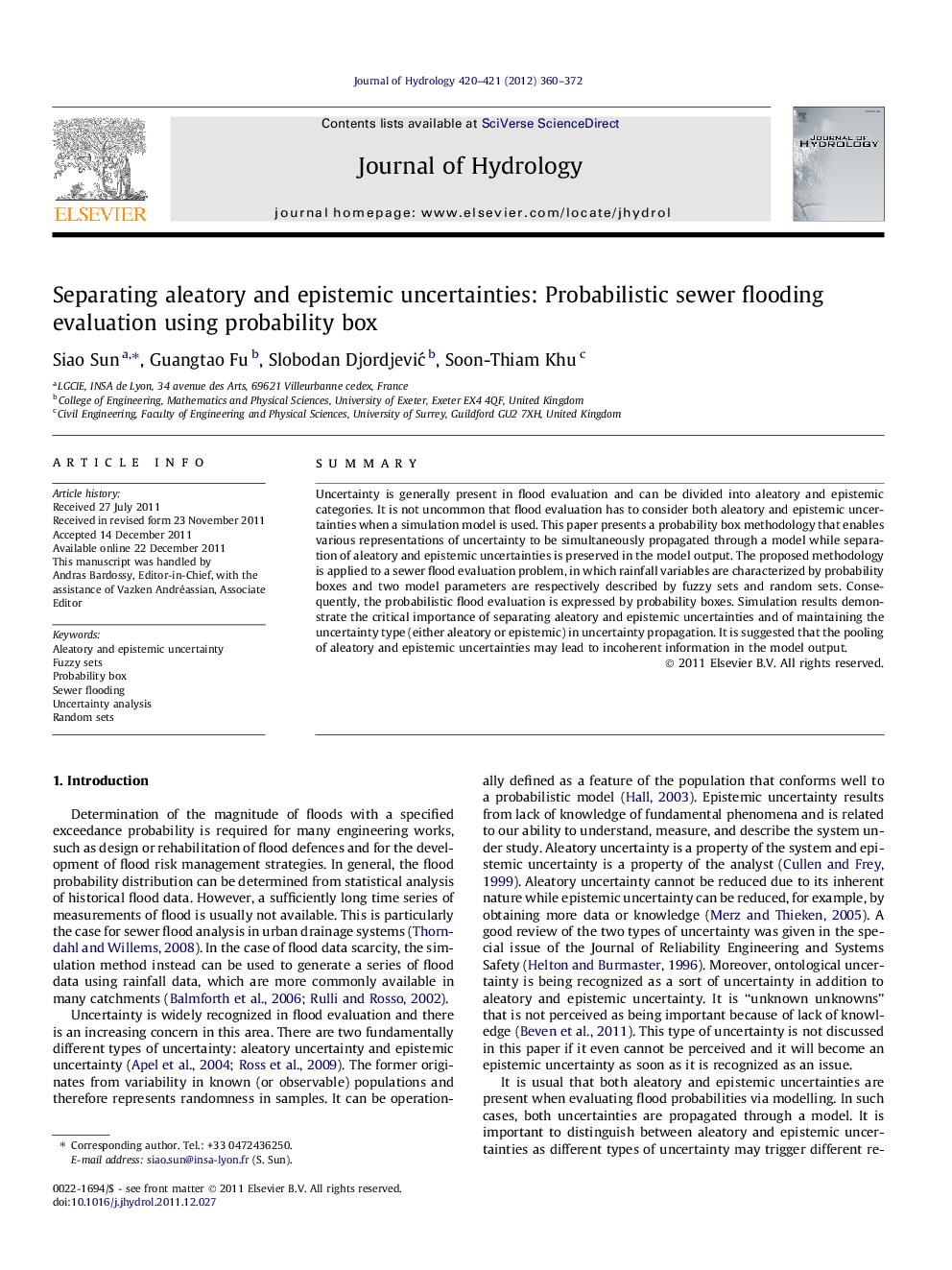| Article ID | Journal | Published Year | Pages | File Type |
|---|---|---|---|---|
| 4577179 | Journal of Hydrology | 2012 | 13 Pages |
SummaryUncertainty is generally present in flood evaluation and can be divided into aleatory and epistemic categories. It is not uncommon that flood evaluation has to consider both aleatory and epistemic uncertainties when a simulation model is used. This paper presents a probability box methodology that enables various representations of uncertainty to be simultaneously propagated through a model while separation of aleatory and epistemic uncertainties is preserved in the model output. The proposed methodology is applied to a sewer flood evaluation problem, in which rainfall variables are characterized by probability boxes and two model parameters are respectively described by fuzzy sets and random sets. Consequently, the probabilistic flood evaluation is expressed by probability boxes. Simulation results demonstrate the critical importance of separating aleatory and epistemic uncertainties and of maintaining the uncertainty type (either aleatory or epistemic) in uncertainty propagation. It is suggested that the pooling of aleatory and epistemic uncertainties may lead to incoherent information in the model output.
► The probability box method effectively handles various uncertainty representations. ► Methods for characterizing uncertainty sources in flood evaluation are given. ► Uncertainty nature, being aleatory or epistemic, should be maintained in propagation. ► Separation of aleatory and epistemic uncertainties provides coherent information. ► Probability box of flood results provides flood evaluation at certain confidence level.
